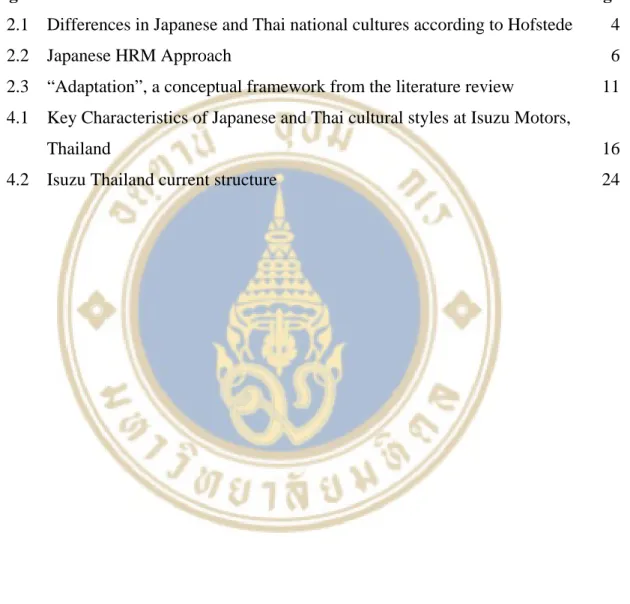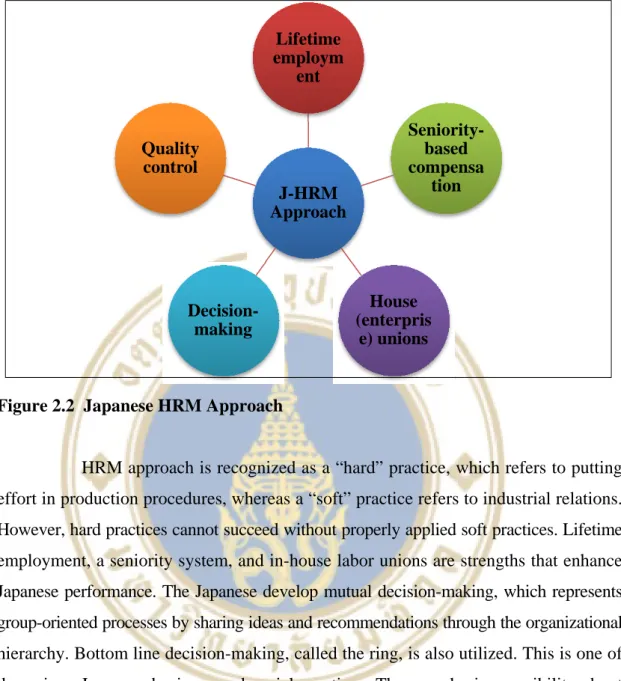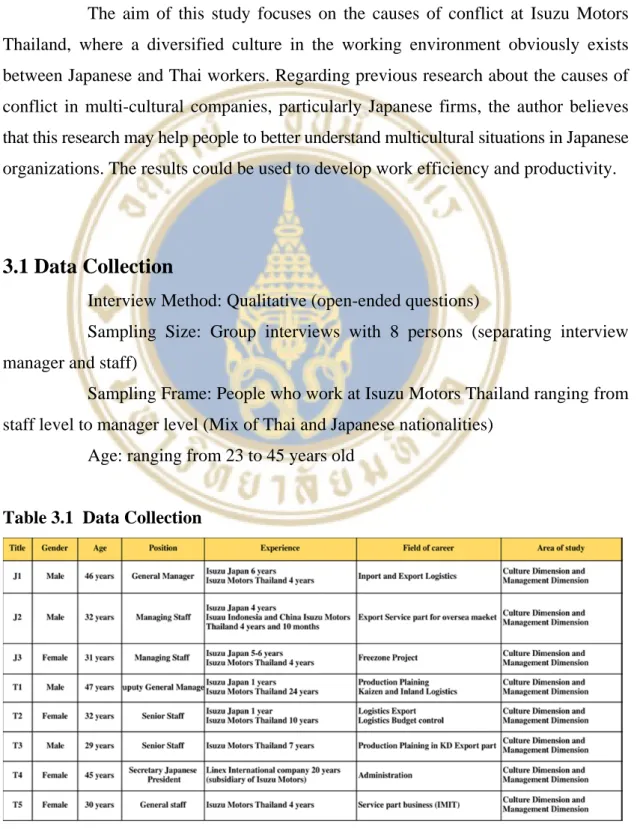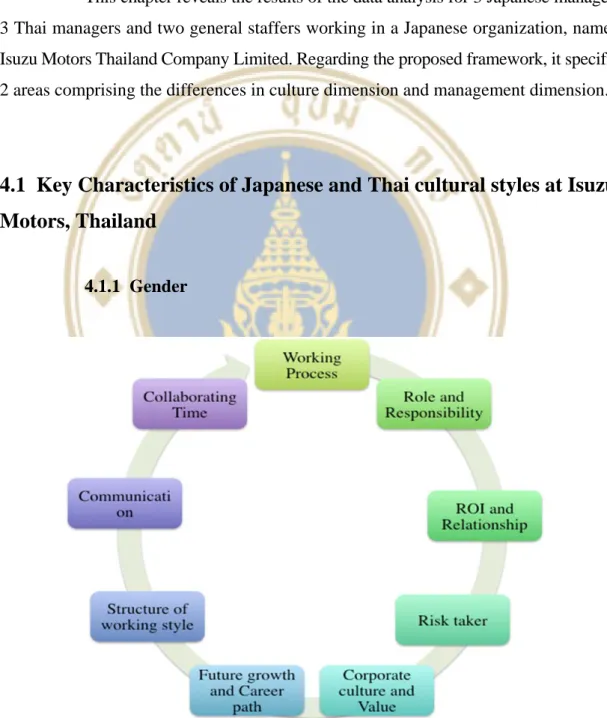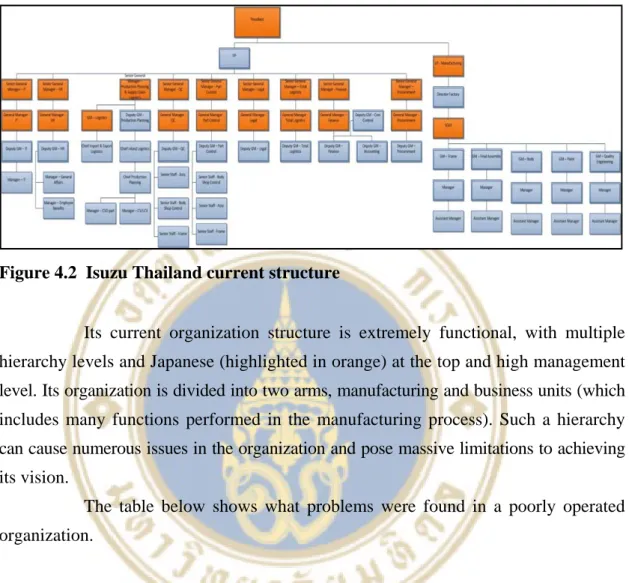Arpa Sae-Tang and other colleagues at Isuzu Motors (Thailand) for their suggestions and all their help. The purpose of this research is to examine the cultural similarities and differences within the Thai and Japanese cultures in Isuzu Motors Thailand Company Limited in order to create a better understanding and increase the effectiveness of the organization. The qualitative research methodology focuses on people working in Isuzu Motors Thailand, from staff to manager (mix of Thai and Japanese nationality), aged 23 to 45 years.
The results show that there are many similarities and differences in the work context between the Japanese boss and the Thai staff, which create significant work achievement problems and uncomfortable atmosphere at Isuzu Motors Thailand. 2.3 “Adaptation”, a conceptual framework from the literature review 11 4.1 Key features of Japanese and Thai cultural styles at Isuzu Motors,. Therefore, the author intends to do an in-depth analysis of the issues faced by Japanese organizations that affect employee performance, especially in Isuzu Motors Company Thailand, Limited, to see what major problems exist that can be obstacles and should be chosen in a correct way. in order to achieve greater productivity and a better working environment.
The purpose of this study was to examine cultural differences between Thai and Japanese cultures at Isuzu Motors Company Thailand, Limited.

LITERATURE REVIEW
Differences in the Japanese and Thai national cultures according to Hofstede’s Dimensions
When Japanese managers work abroad, they traditionally apply a conventional management style, policy or specific corporate culture to the overseas branch. Sometimes Japanese managers do not give priority to Thai staff because of the social hierarchy (Pongsapich, 1998). Within an organization, Thai subordinates prefer to keep their distance, while Japanese managers require close working relationships because they think people belong to their family or organization.
Concepts of work seem to be major differences between Japanese managers and Thai subordinates. Thai employees generally believe that Japanese managers are workaholics and that they put a lot of effort into the company.
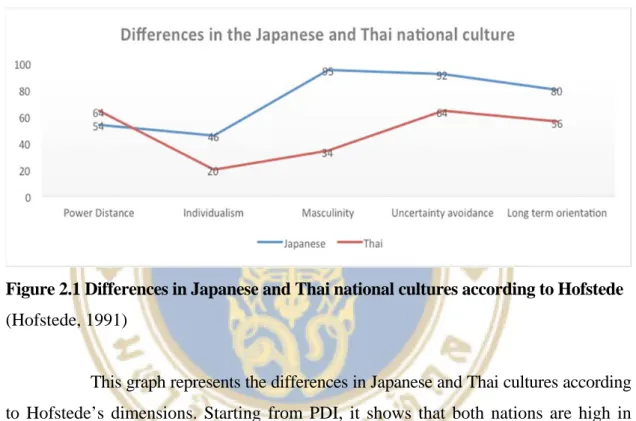
HRM Approach
- Japanese Management VS Thai Management Practices and Adaptation Some arguments claim that many Japanese management practices cannot
- Thai Management Style
- Management Practices of Japanese in Thailand
- Research Proposition
Furthermore, the national culture of the workforce influences the way expatriates respond to the planned structures and systems, as well as the implementation of management practices (Hofstede and Hofstede, 2005). In this context, the Thai management style can be described as follows:(1) Hierarchy – The Thai management style uses a centralization-control approach based on seniority and relationship orientation. The decision-making culture is guided by hierarchy and relies heavily on the leader of the group.
Being kind can build long-term commitment (Cooper, 1991) and also develop happiness. 5) Relationship Orientation – Relationships and mutual trust are at the core of the Thai leadership style. Therefore, decision-making and authority in Thai organizations are usually limited to upper management levels. The Thai style of work culture does not encourage staff to express their ideas in the workplace, make mistakes or be inventive.
Several previous studies on Japanese management approaches in Thailand have shown similar common practices implemented by Japanese management companies. In this situation, it is necessary to discuss Japanese management practices while taking into account the sensitivities of Thai culture and belief system. However, there are parts of cultural differences that create the unacceptability of certain aspects of Japanese management practices.
Krasachol and Tannock (1999) argue that Thai culture already has many of the qualities that can support effective operations, as there are a variety of approaches to TQM. The lack of new specialization and expertise in logistics management as well as the recent inadequacy of logistics information systems are problems stopping the implementation of the JIT system. First, it came from inconsistency between national culture (5 dimensions of fundamental cultural value; Hofstede theory), including a unique Japanese management practice called HRM approach.
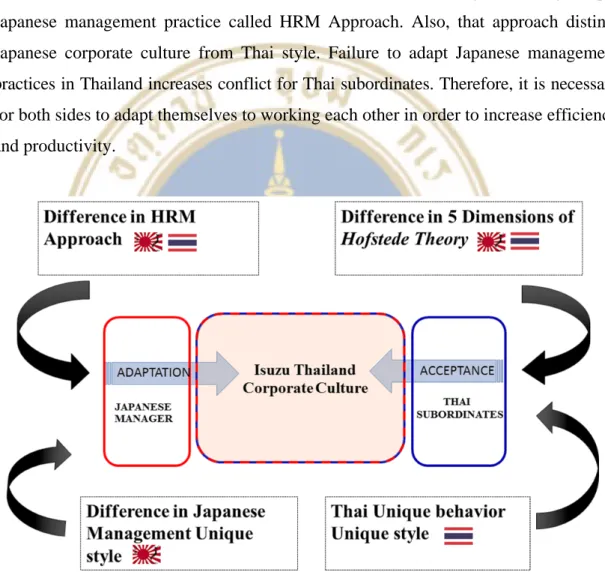
RESEARCH METHODOLOGY
- Data Collection
- Proposed Framework
- Cultural Dimension
- Management Dimension
- General Questions
- Specific Questions
- Question List
The literature review shows that conflicts arise from the differences between cultural dimensions, which creates differences between people of different cultures and therefore creates conflict (in the company). The literature review shows that poor management style and associated system practices result in conflict from a work context and hinder adjustment between Japanese managers and Thai subordinates. In the first part of the interviews, general questions are asked about personal and work information of the respondents.
In this part, the questions are about the factors that cause conflict in a multicultural company. How did you prepare for interacting with Thai culture before going to Thailand. What is the culture shock for Japanese/ Thais If the difference is how can they develop to reach Japanese standard.
How do you solve this problem between employee and boss for better communication and work efficiency.
RESEARCH FINDINGS
Key Characteristics of Japanese and Thai cultural styles at Isuzu Motors, Thailand
- Gender
The Japanese decision approval process, along with the corporate hierarchy, is cautious and conservative and normally slow due to this process involving a complex documentation flow and meetings. Japanese are considered group-oriented, but require individual effort for the success of the entire group. Thais prefer to work individually and normally consult their senior staff when help is needed.
What they say is very important, so they prefer to make sure that everything is exactly 100%. Thai people tend to say "YES" no matter what the issue or whether they can do it or not. They consider the value of the process with the person responsible for each project.
Communication Japanese tend to maintain relationships in business by respecting each other face to face. Japanese companies tend to allow employees to work only regular hours and limited locations at the office. Office environments are arranged in the same way as a school classroom, where the head (managerial division/department) is at the front of a row of desks.
It is difficult to find a job, so the Japanese do not like to change jobs.
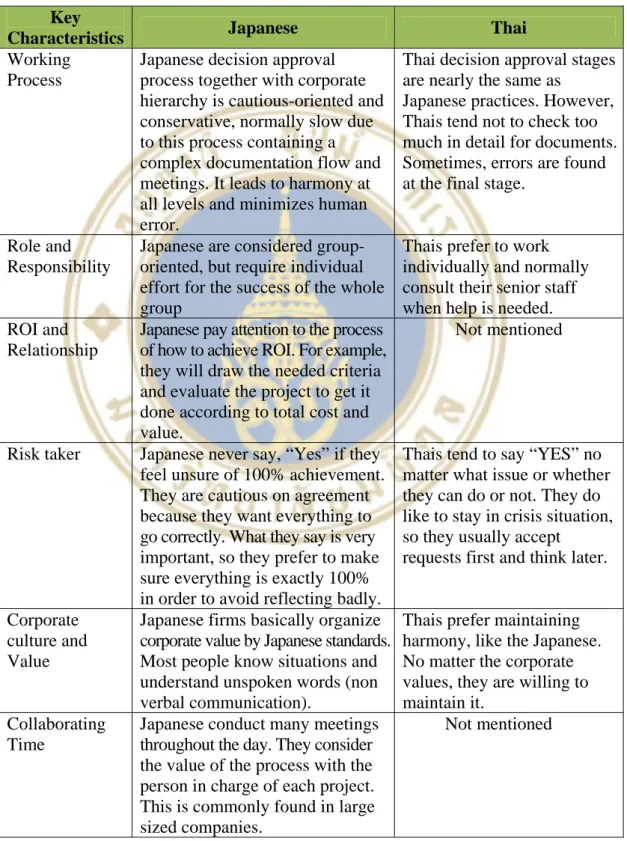
Finding links Theory
- Findings on Hofstede’s dimensions
- Barriers in communication
- Problem solving; “Mai Pen Rai” versus “Silence”
- Time management problem
- Culture Shock in communication and offering extra help
They do not fear losing their job as it is quite easy to find a new one. During the interview with [T1], the author noted the importance of harmony in the Thai feminine culture. Therefore, Thai employees actively participate in the 5S activities dictated by the company (cleaning the department and their belongings).
Also, Thai people prefer to behave in the same way of life, such as having lunch together and having high interaction on personal matters. Personal barriers - [T1] said that, in the generation of rapid technological development, Thai people use LINE to work or communicate in groups. During the interviews, the managers mentioned a difference in the way people tend to solve problems and conflicts in Japan and Thailand.
This indirect punishment is actually surprising, because it is not directly related to the error and will not help solve the problem behind it or prevent the same type of error in the future. Because they know that they cannot change the past anyway, they are normally not rude or dwell on things that have already happened. In general, we reported the tendency that Japanese employees do not really adapt to the Thai style of working and doing things.
For example, in the assembly line of Isuzu Motors, Thai employees tend to come late, which is accepted. Another explanation could be that they have no real choice, as it would be difficult to realize a policy where every delay is punished in a country where punctuality is not as highly valued as in Japan. In the author's opinion, this Japanese practice is a good way to achieve, especially in a developing country.
Failure in organization structure
Does not facilitate group work Since communication is very limited, it does not facilitate group work and ultimately the level of coordination may decrease. Lack of sense of belonging Because employees are focused on their tasks and do not necessarily communicate with each other, employees do not understand the impact of their work on others and are disconnected from the business processes of the organization as a whole. Suboptimal judgment quality Since the authority rests only with Japanese managers, an analysis of problems is made based on Japanese conditions (eg traffic conditions, quality of workers, etc.), which is misleading because conditions in Thailand are different.
CONCLUSION
- Conclusion
- Recommendations
- Provide supportive, effective and non-instructive management Regarding the current environment at Isuzu Motors, employees get feedback
- Building confidence by giving meaningful work for all positions No matter what culture and position they have, the management team must
- Making the working environment more relaxed
- Limitations
- Suggestions for Further study
They should also understand and know how to communicate with others, thereby building trust and reducing miscommunication, which increases harmony. Regarding the framework, there are four factors in the assumption that contain: (1) 5 cultural dimensions, (2) Unique Japanese management style, (3) Insufficient motivation and (4) language barrier. Regarding conflict between Japanese managers and Thai subordinates at Isuzu Thailand, the author suggests that both parties be trained not only in business matters but also in Japanese and Thai cultures.
However, just setting up and training does not do enough to get rid of this problem. However, it seems impossible to require a boss to be a consultant for all issues due to the fact that they have many jobs and meetings to do every day. The only possible thing that can happen is to pay more attention to personnel issues and address them as much as possible. If they are unable to give suggestions verbally, replying by email may be the best alternative way to do so.
Isuzu Thailand should arrange more annual travel trips or interesting activities for the employees to eliminate stress from the job. They may feel more comfortable doing a job at home instead of producing work in the office all the time. Due to the fact that all respondents in this study are from the automotive industry; the results of this study may change if the study is focused on other industries.
For future research, a study could focus on each industry involving Japanese companies, because the differences in industries have different cultural work environments and individual characteristics, which creates the possibility that the results of that study may present changes. Furthermore, future research should focus on companies in other cities in Thailand, not just Bangkok. Future research testing the proposed framework is needed to provide Japanese organizations with practical guidance on how to successfully adopt and implement their management practices in Thailand.
Japanese QCC in Thailand, paper presented to Joint Symposium, on Thai-Japanese Relations: Development and Future Prospects. The role of Thai values in the management of information systems; a case study implemented as MRP systems paper presented to Proceedings of the Fifth International Working Conference of IFIP WG 9.4-. Information System Implementation and Evaluation in Developing Countries, 18-20 February, London School of Economics and Political Science and Asian Institute of Technology, Bangkok.
